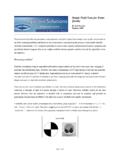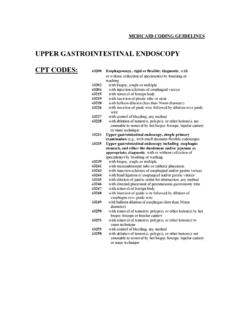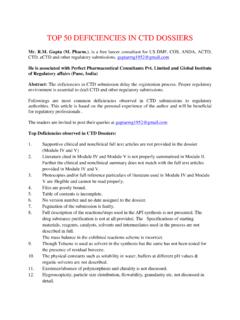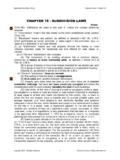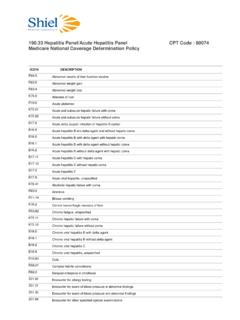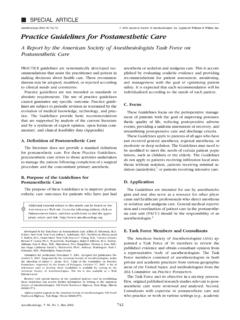Transcription of portable WTP handbook
1 1 Contents Introduction .. 1 Terminology and Abbreviations .. 2 Constructing A portable Water Treatment System Using Local Materials .. 3 I. Siting and materials .. 3 a. Siting .. 3 b. Containment and plumbing .. 3 c. Media .. 7 II. How it (and how to maintain ) .. 10 a. Gravel roughing filter .. 10 b. Slow/bio- sand filter .. 10 c. Charcoal (biochar) filter .. 11 d. Safe water storage .. 14 Introduction Contamination of drinking water sources by disease causing microbial agents and chemical toxicants such as pesticides, pharmaceuticals, industrial wastes and fuel components is a growing worldwide problem. Microbiological water contaminants cause diarrhea, flu and other diseases. Many synthetic chemical contaminants bio-accumulate in the human body and cause cancer, birth defects and diseases of the reproductive system, and disrupt endocrine and neurological systems.
2 For households and communities in remote areas, low-cost decentralized water treatment for removal of biological and chemical contaminants can be accomplished using filter media generated/acquired locally. Here we provide detailed instructions for construction of a portable drinking water treatment plant providing up to 300 L/day using a series of gravel, biologically active sand and char filters. Containment is provided by four 200 L BPA-free HDPE (high density polyethylene) drums. Empty drums weigh less than 10 kg and can be carried into remote communities on foot, connected with a small number of PVC fittings, and filled with media generated on-site and acquired nearby. The system costs about $125 to construct, and should provide years of service with periodic maintenance of the bio-sand filter and char refurbishment once per year. The information and design specifications presented here are open source / open architecture.
3 We invite critical feedback from field engineers and WASH (water-sanitation-hygiene) sector development practitioners, university researchers, sustainable development NGOs, community water technicians, etc. Please contact to find out more. 2 Terminology and Abbreviations Adsorption / Absorption / Sorption Adsorption signifies a surface interaction between dissolved species and solid material (in this case, char). This process is distinct from absorption, which means to soak up or to take into. To be exact, however, in water treatment contaminants diffuse into char pores (absorption) where they bind to char surfaces (adsorption). This has led wide use of the nonspecific term sorption. Biochar / Charcoal / Char Biochar refers to the practice of applying charred biomass to agricultural soils in order to increase crop yields, and/or to sequester carbon in the soil.
4 Charcoal refers to a biomass-derived char product most often used as cooking fuel. Char is a nonspecific term used for convenience referring to biochar or charcoal. Biomass / Feedstock Here, biomass refers to any woody or cellulosic material ( wood, agricultural and forestry residues) that serves as the precursor, or feedstock, for making char. Micro-porosity / Surface Area A micro-porous material possesses very fine pore structure at the nanometer to micrometer (10-9 10-6 m) scale. Surface area refers primarily to internal surface area, within micro-pores. Pathogen Human-disease-causing waterborne microbiological agent. AC/GAC activated carbon / granular activated carbon BSF / SSF / S-BSF biological sand filter / slow sand filter / slow biological sand filter SOC synthetic organic compound WASH water-sanitation-hygiene 3 Constructing A portable Water Treatment System Using Local Materials Improving water quality involves mitigating disease causing biological agents (pathogens) as well as harmful chemical contaminants and non-harmful compounds that impart an unpleasant taste, odor, or appearance.
5 Pictured on the cover of this handbook is a multi-barrier water treatment system that addresses these challenges using a sequence of gravel, biologically active sand and char filtration. A system built according to these specifications can provide up to 300 L/day of treated water depending upon source water quality. I. Siting and materials a) Siting Gravity is the easiest and most dependable way to move water. The water system should be sited on stable, level ground, and at lower elevation than the source water and higher elevation than the location(s) where treated water will be used. This circumstance enables completely passive operation of the treatment system and very simple control using only a float valve (the same device that refills the tanks of flush toilets): when water is withdrawn from the storage tank the water level in the system drops, opening the float valve.
6 When the system is full, the float valve closes. Plumbing connections should be protected from accidental damage, and the entire system should be shaded to prevent degradation of plastic components by sunlight. b) Containment and plumbing The following parts and tools are required for installation of the water system: 4 The above plumbing parts summary includes PVC fittings for connecting the water system to existing water supply and point-of-use infrastructure, as well as a number of recommended spares. Tools required include a sharp pocketknife and serrated blade for cutting PVC, a tape measure, paintbrush for applying silicone and PVC glue, and a permanent marker. A common vegetable steamer pan with holes ~16 mm (1/2 ) is useful for sieving gravel to obtain the pea gravel fraction. PVC connections are installed in the HDPE drums using a knife to carefully cut holes the diameter of male PVC threaded couplers.
7 Connections should be snug enough that the male couplers are screwed into drums, helping to minimize leaks. Silicone is applied to male-female couples spanning tank walls also to help prevent leaks. Liberal use of Teflon tape on all threaded connections is highly recommended. The following diagrams show plumbing connections for each tank and list the necessary parts. @*/+12*/%A<1%3175/0!%3?+*/347++/@ @ 5 6 The outlet from the gravel filter should be located near the top of the tank, a few cm below the full-position water line (set by adjustment of the float valve). The outlet from the sand filter to the char filter should enter the char tank at a level about 5 cm above the level of the sand. The same is true for the connection from the char filter to the storage tank. This ensures that the water level in the sand and char filters will never drop below the top surface of the filter media.
8 This is essential for maintaining full vigor and functioning of the biofilm in the sand filter, and for utilizing all of the sorption capacity of the char filter. Tanks are connected in series using 15-20 cm sections of flexible tubing secured with hoseclamps. This, along with the valve configuration shown, allows tanks to be easily isolated and disconnected for maintenance. Screening the tops of tanks excludes debris, insects, etc. Shade cloth folded to several layers thick excludes sunlight in order to inhibit the growth of photosynthetic microorganisms (algae, cyanobacteria) in the system. The entire system should be shaded from direct sunlight, which can degrade plastic fittings and facilitate microbial growth. Inlet/outlet connections should be oriented unobtrusively and/or protected from accidental breakage using stones or other objects. 7 c) Media The diagram below shows installation of the gravel and float valve.
9 Large rocks are used to protect the float valve armature ((a) and (b)). A PVC pipe fitted with a -1 coupler is used to house the nylon string connecting the float valve armature to the floater ((c) and (d)). The diagram below shows construction of the underdrain system for the bio-sand and char filters. Large stones are used to protect the slotted drainpipe (a). The bottom ~ 30 cm of the tank is then filled with sequential layers of gravel (b), pea gravel (c), and coarse sand (d). A common vegetable steamer with holes ~ 16 mm dia. ((e) and (f)) can be used to sieve mixed river gravel to obtain pea gravel fraction. Window screen (f) or poultry netting can be used to sieve sand to obtain coarse and fine fractions. 8 Fine sand or char are then placed in a layer 30-40 cm thick on top of the underdrain, leaving ~15 cm of freeboard. Water level throughout the system is controlled by setting the height of the floater in the gravel filter.
10 Freeboard should be maximized to make full use of system volume and provide maximum head for moving water through the system. The diagram below indicates appropriate depths for underdrain and filter media. 9 Illustrations by Nathan Reents. 10 II. How it (and how to maintain ) a) Gravel roughing filter Source water (controlled by the float valve) enters by a pipe at the bottom of the gravel filter and flows upward through the media. This removes turbidity (particles) and some dissolved matter that sticks to the surfaces of particles as they settle. One or more times during the year (depending upon source water quality), the large valve at the bottom of the gravel filter is opened, rapidly reversing the direction of flow through the filter ( backwashing ) in order to flush out the accumulated sediment and organic matter. Gravel filter maintenance: As long as the plumbing does not break, or the plumbing or media become irremediably clogged by sediment or debris, the gravel does not need to be removed or replaced within the lifetime of the treatment system.
